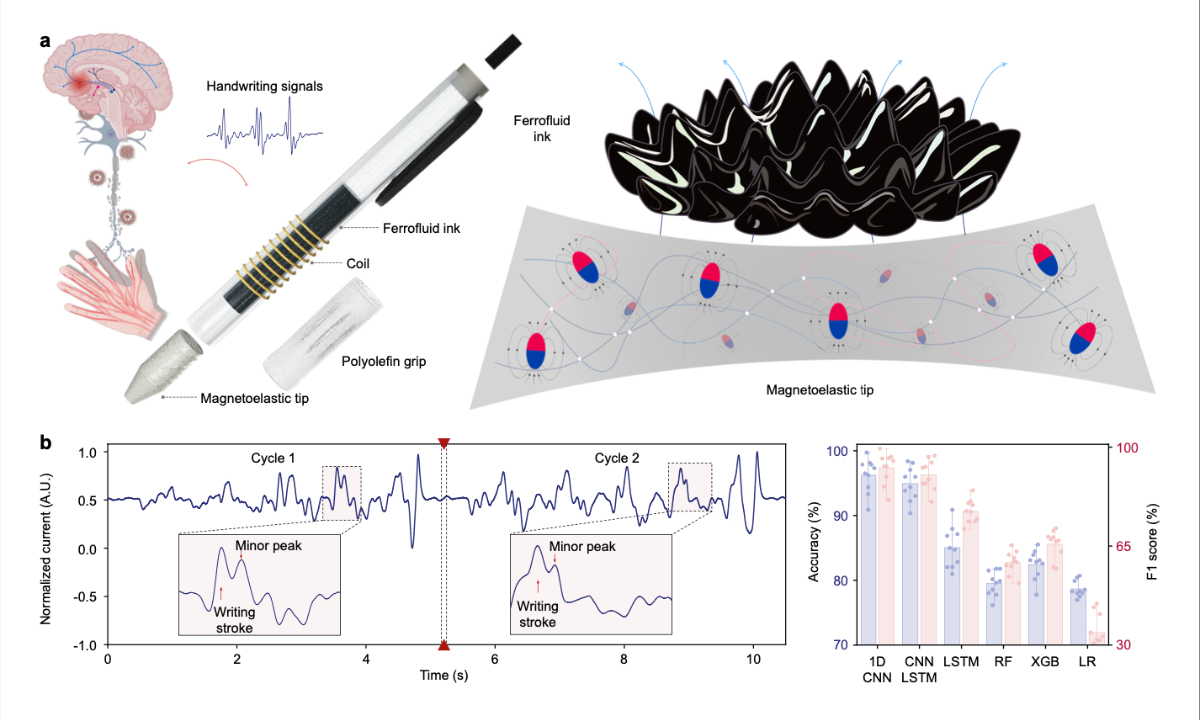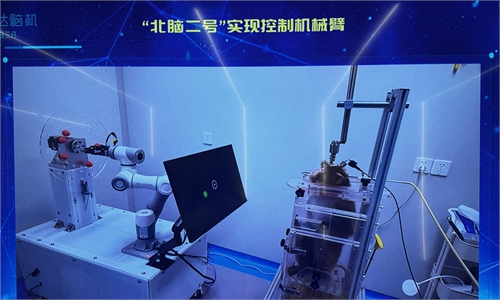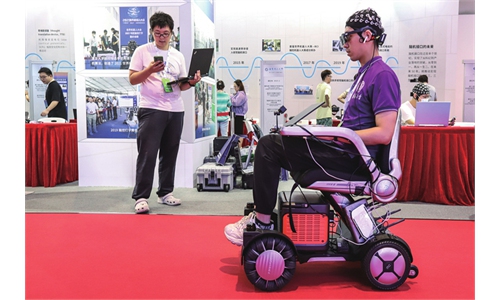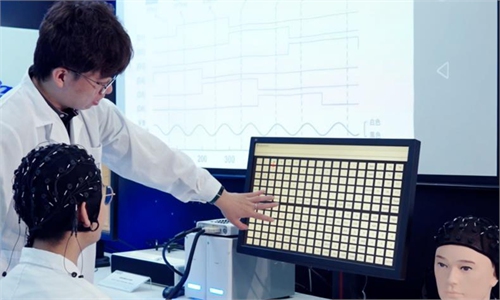Pen containing magnetic ink and AI technology able to determine presence of Parkinson’s disease

A pen containing magnetic ink and artificial intelligence (AI) technology that can improve the early diagnosis of Parkinson’s disease Photo: Courtesy of Chen Jun
A research team from the University of California, Los Angeles (UCLA) has developed a pen containing magnetic ink and artificial intelligence (AI) technology that can determine the presence of Parkinson's disease from the subtle handwriting movements. The device is expected to enable early, low-cost, and accurate diagnosis of the disease across large populations and in resource-limited settings.
The findings were published Tuesday in the international journal Nature Chemical Engineering.
The pen, filled with magnetic ink, uses neural network-assisted data analysis to identify differences in handwriting differences between Parkinson’s patients and healthy individuals, offering the potential for earlier diagnosis.
The pen converts hand movements into electrical signals for analysis. By examining the frequency and amplitude of these electrical signals, scientists can determine whether the tremor is caused by the Parkinson’s disease, as its tremor patterns differ from those of other conditions, Chen Jun, a professor from UCLA who led the research, told the Global Times on Tuesday.
Parkinson’s disease affects nearly 10 million people worldwide, making it the second most common neurodegenerative disorder after Alzheimer’s disease. It is also the fastest-growing neurodegenerative disease globally. In low- and middle-income countries, the number of cases are likely underreported due to a shortage of trained medical professionals for diagnosis.
According to Chen, the cost of the pen is as low as 35 yuan ($5) because it is made of common and inexpensive materials. Its production is easily scalable, which further reduces its cost.
Parkinson’s disease symptoms include tremors, and diagnosis typically relies on observing motor skills. However, this method lacks objective criteria and often relies on the clinical judgment of physicians.
The pen’s mechanism relies on the magnetoelastic effect at its tip and the dynamic behavior of ferrofluid ink. It accurately records handwriting signals, and a one-dimensional convolutional neural network-assisted analysis successfully distinguished patients with Parkinson’s disease with an average accuracy of 96.22 percent.
Researchers noted that future work will focus on expanding the patient sample size and exploring the pen’s ability to track disease progression over time.





